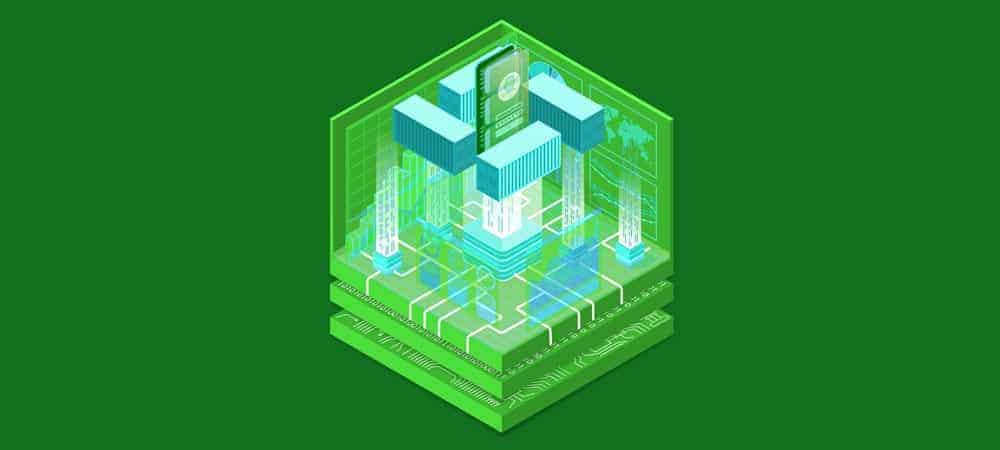Containerization: force multiplier to increase business value


More and more SAP customers around the globe are turning to the SAP Data Hub solution and achieving unprecedented benefits. Take Lockheed Martin Space, a division of Lockheed Martin. Lockheed Martin is a prominent U.S. aerospace, defense, security, and technology company. SAP Data Hub's orchestration and analysis capabilities enable the company to automate the categorization and simplified analysis of rapidly created and high-volume image processing algorithms of solar images. Which saves massive amounts of time and money. Or SAP early innovator Kaeser Kompressoren, specializing in air pressure technology and headquartered in Coburg. Using SAP Data Hub, Kaeser is able to collect and analyze a huge amount of compressor operating data (including IoT data). For example, to optimize service cycles or predictive maintenance; but also to put the operating data into context for a wide variety of purposes - with customer data, supply chain management information, and machine data, for example.
Companies from a wide range of industries - including the banking sector - benefit from the flexible and agile deployment options and the advantages of SAP Data Hub. SAP Data Hub acts as a kind of power amplifier for the business.
In a nutshell, SAP Data Hub stands for several things: for integration, orchestration, channeling, but also for data management in order to use information from the numerous existing systems or sources of a company advantageously. And from both internal and external sources. Nevertheless, this SAP solution represents much more than a simple integration software tool. This would not do justice to the power, the performance and with regard to the versatile application possibilities.
This is because SAP Data Hub can also be used to create applications that focus on the following: leveraging any existing data potential even in a widely branched organization, regardless of where the data/information is located. In view in particular: Big Data application scenarios and/or microservices. The focus or the consolidation view refers to a system landscape with SAP applications, but also with non-SAP application sources, such as Hadoop.
System solution with "SAP Data Hub on SUSE
From an architectural point of view, SAP Data Hub is in fact a combined system solution in which the SAP HANA platform and SAP Vora play a prominent role, along with integration features - and: a runtime component as an infrastructure element. Currently, SAP Data Hub is available in version 2.6. Version 2.7 is coming soon.
In this context, SAP relies on open source technology on the infrastructure side. Namely, the SUSE solution Container-as-a-Service Platform, or CaaSP for short, with the container management technology Kubernetes. CaaS Platform was the first "container solution" for SAP Data Hub. In the meantime, the term "SAP Data Hub on SUSE" has become established. SUSE CaaSP ensures above all: flexible, simplified and automated options for the delivery of small-scale services (microservices) using containers, including the use of Kubernetes. SUSE solutions together with SAP Data Hub are also the first choice for the SAP user companies Lockheed Martin Space and Kaeser Kompressoren mentioned at the beginning.
Microservices are generally smaller applications or short queries - including ad hoc queries - from Big Data fields with business issues, the answers to which sometimes bring significantly high benefits.
Examples of this: Which service use case had a specific problem in the company's history? Which supplier delivers on time and also has a predominantly positive reputation in social media channels? Or: Is there information in the IT systems used about what kind of components have ever been installed in a certain product; what is their nature; how many complaint cases were there in total; can alternative solution patterns be generated from this?
By the way: For every Google query, a microservice is actually built and processed (and also deleted again). And this is done using the Kubernetes container technology.

Kubernetes and software-defined data center
Kubernetes, in particular, is able to advantageously support container apps in cluster environments (physical or virtual machines). Likewise, Kubernetes is high on the list when it comes to efficiently putting a container-centric infrastructure into action (instead of a more rigid host-centric one).
SUSE Linux Enterprise Server (SLES) is also used here as a container host OS in a specialized version (SLES Micro OS). The benefit: a small footprint with optimal resource utilization. SLES Micro OS is part of SUSE CaaSP and is thus also used in SAP Data Hub. As a side note, SUSE is a certified Kubernetes Service Provider and the SUSE CaaS Platform is certified for SAP solutions like SAP Data Hub from the Walldorf-based software company. A few more things to say about SUSE CaaS Platform: The open source solution is designed for application development and hosting of container-based applications and services. It is a building block of SUSE's software-defined infrastructure (SDI) portfolio, which delivers next-generation open source technology-based enterprise applications. The focus is on enabling IT departments and developers, as well as DevOps teams, to deploy, manage and scale container applications and services to achieve business goals faster and better.
This software-defined infrastructure approach that supports application containerization moves enterprises forward. Especially those enterprises where business agility is high on the optimization agenda. Two things are possible: either containerizing applications directly or using a microservices architecture. SUSE CaaS Platform supports both to drive agility and reduce operational costs. SUSE CaaSP as a container infrastructure solution is easy to use and enables the development as well as deployment of container applications and services for next-generation applications; moreover, native cloud applications. Nevertheless, if necessary, traditional or existing apps can also be lifted or transformed into the new world.
Three key components of the SUSE CaaS Platform
The SUSE CaaS Platform includes three functions in particular: orchestration via Kubernetes and a specially developed operating system (SUSE Linux Enterprise Server MicroOS) and containers, as well as configuration options. They also unfold their advantages in conjunction with SAP Data Hub, which ultimately mean business-related monetary benefit plus points.
One of these is a minimized time-to-market: This is because CaaSP is based on out-of-the-box principles. Specifically, companies can use the Kubernetes orchestration tool without very deep specialized knowledge for implementations and quickly provide high-performance container services for business use. It also enables enterprises to ensure increased portability and, on top of that, create or generate them in a highly secure IT environment.

Further efficiency gains through automation can be mentioned as a benefit: namely through an integrated container tool package, which stands for the automation of deployment management tasks and ensures full support of the container application lifecycle. Other CaaSP features round out the solution, such as on-premise registry management, container image creation, container image remediation capabilities, and the use of secure and trusted images from the SUSE Registry.
In addition, DevOps support is emphasized, which means an additional benefit: After all, in application lifecycle management it is essential that developers and the operating team work together in a uniform container platform. Only in this way is it possible to minimize both development and operating times. With the effect that microservices implementations are simplified and a beneficial configuration-code coexistence comes into play.
Of course, SUSE is constantly developing the CaaS platform solution. The current version 3 is in use at numerous companies (or at SUSE partners). Version 4 is already available as a beta version with a number of innovations or further developments. It will then also be available together with SAP Data Hub.
Of course, SAP and SUSE have closely collaborated or developed for the availability or integration of CaaSP in SAP Data Hub. As they have in the past, for example, in SAP HANA use or SAP S/4HANA (and S/4 Cloud) deployments of SUSE SLES for SAP Applications or the use of SUSE Openstack in connection with SAP Solutions. Or in the use of SLES for SAP Applications and SUSE Openstack (for Infrastructure-as-a-Service, IaaS) in the Walldorf software group itself. For example, within SAP's corporate IT, SAP Cloud Platform (SCP) or SAP's HANA Enterprise Cloud (HEC).
Tendency at SAP goes in the direction of Kubernetes
SAP and SUSE have both had their eyes firmly on the concept of software-defined infrastructure for some time. Today, SUSE provides a range of SAP-related solutions or special SAP versions for SAP use. And SUSE is already collaborating with SAP on various further developments. For example, in cloud Foundry containerization. Or the coupling of Openstack and Cloud Foundry. Cloud Foundry is a platform-as-a-service (PaaS) solution based on open source.
Or as part of the open source project called "Gardener". In keeping with SAP Data Hub, it deals with Kubernetes. Gardener was "open-sourced" by SAP. Which also shows that SAP is increasingly relying on Kubernetes. The key point here: setting up, operating and managing Kubernetes clusters, for example in conjunction with Software-as-a-Service (SaaS). There are plans to include Gardener in future SUSE CaaS Platform versions.
Trusted Advisor in the SAP Community
For over 20 years, SUSE and SAP have worked closely and successfully together in a world-class partnership. Today, SUSE is the preferred solution provider and partner in the SAP community for several thousand companies around the globe and in virtually all industries that use SAP technologies and solutions.
What's more, SUSE is considered a trusted advisor and "safe bet" when it comes to SAP deployment. More than 90 percent of all HANA installations use SUSE Linux Enterprise Server (SLES) for SAP Applications-partly because only SUSE provides numerous SAP HANA-specific features. Of course, this includes all HANA-based SAP solutions: S/4HANA, BW/4HANA, C/4HANA or SAP Data Hub. In addition to SLES for SAP Applications, SUSE provides the CaaS Platform (container management/including Kubernetes implementation from SUSE), SUSE Openstack (for IaaS orchestration), SUSE Enterprise Storage (Ceph) as storage or SUSE Manager (for enterprise system management) to increase the degree of automation in Linux operations.
The trusted advisor position in the global SAP community is also underpinned by the following fact: At the annual SAP Innovation Awards, formerly known as the SAP HANA Innovation Award, companies are honored for using SAP platform technologies in an outstanding way to realize business transformation in an innovative manner and with a special digitalization implementation. This takes place each time as part of the SAP customer event Sapphire. This year in May, SUSE was also able to shine. The clear majority of all SAP Innovation Award winners and participants use solutions from open source innovator SUSE.









